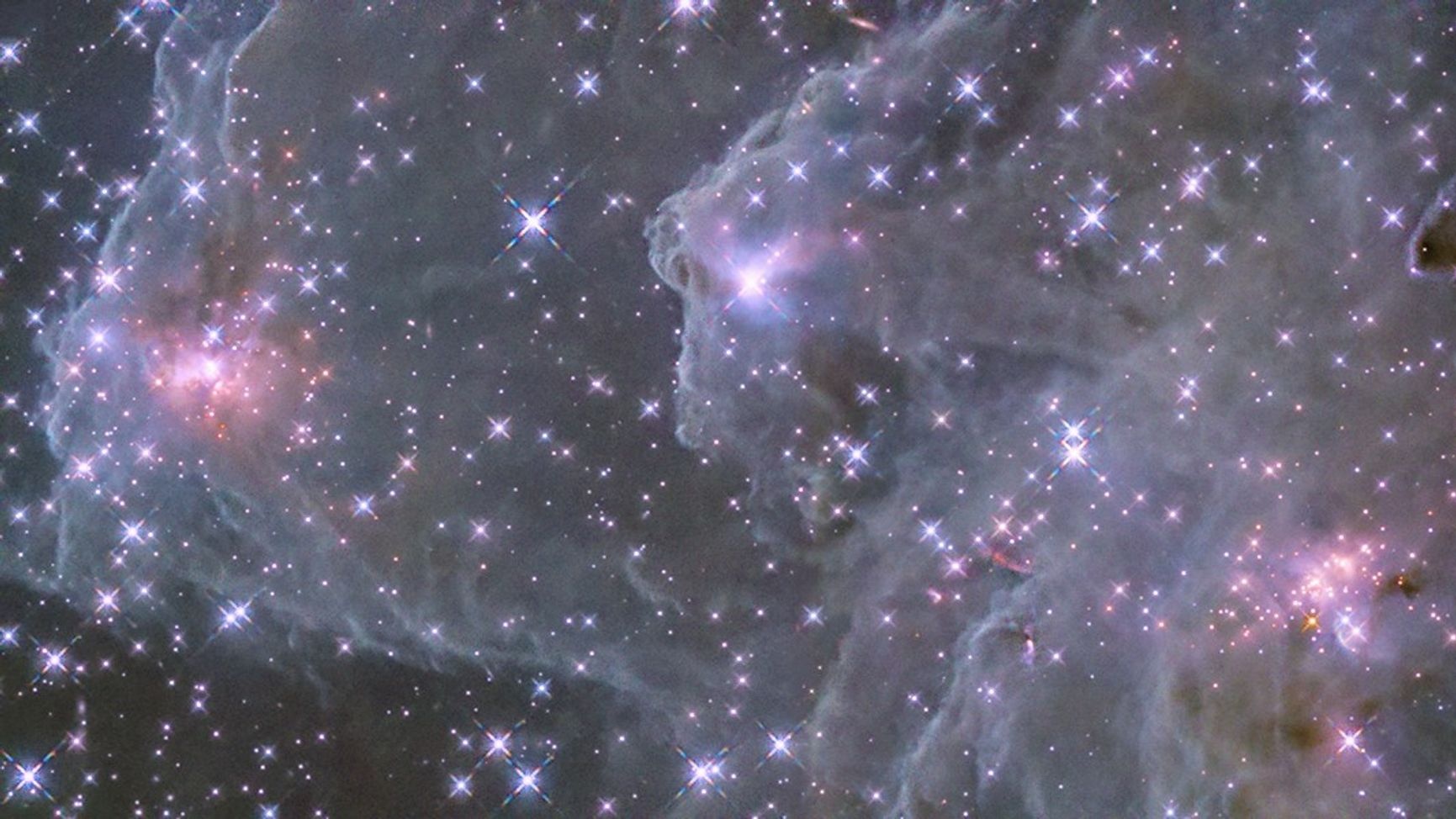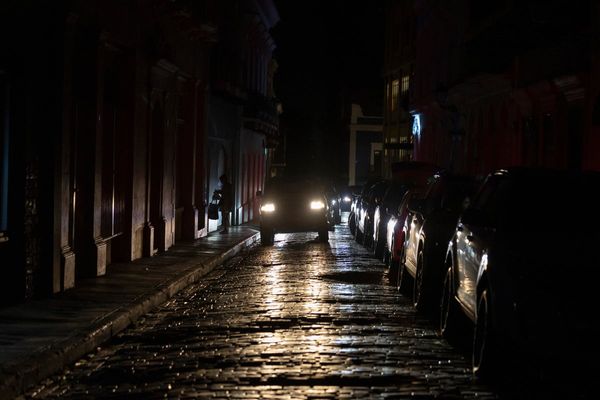
A sparkling stellar nursery appears reminiscent of the early universe in new images from the Hubble Space Telescope.
The emission nebula, known as Sh2-284, is an immense region of gas and dust that fuels new star formation. Located 15,000 light-years from Earth, at the end of an outer spiral arm of our Milky Way galaxy, Sh2-284 lacks elements heavier than hydrogen and helium, much like the environment of the early universe, according to a statement from NASA.
"These conditions mimic the early universe, when matter was mostly helium and hydrogen and heavier elements were just beginning to form via nuclear fusion within massive stars," NASA officials said in the statement. This is what is known as a "low-metallicity" region.
The Hubble Space Telescope image offers an up-close view of one section of the nebula, which is largely shaped by a young central star cluster called Dolidze 25, located outside of the image frame. The cluster is home to young stars ranging in age from 1.5 million to 13 million years old (for reference, our sun is 4.6 billion years old).
Emission nebulas are areas of active star formation, where ultraviolet radiation from nearby young, hot stars ionizes the surrounding gas (primarily hydrogen), which then, in turn, emits a bright light. The ionizing winds and radiation from the star cluster pushes gas and dust around in the nebula, creating the intricate features and cloud-like carvings observed in the Hubble image.
The new infrared view from Hubble captures the nebula's dazzling starlight that might otherwise be obscured by dense dust and gas clouds if observed at a visible wavelength. The newborn stars glow bright pink in infrared light and appear exceptionally vibrant against the dark clouds of gas and dust.
The recent observations of Sh2-284, which NASA released online on March 8, can be used to study how low metallicity influences stellar formation, and how that can be applied to our understanding of the early universe.







